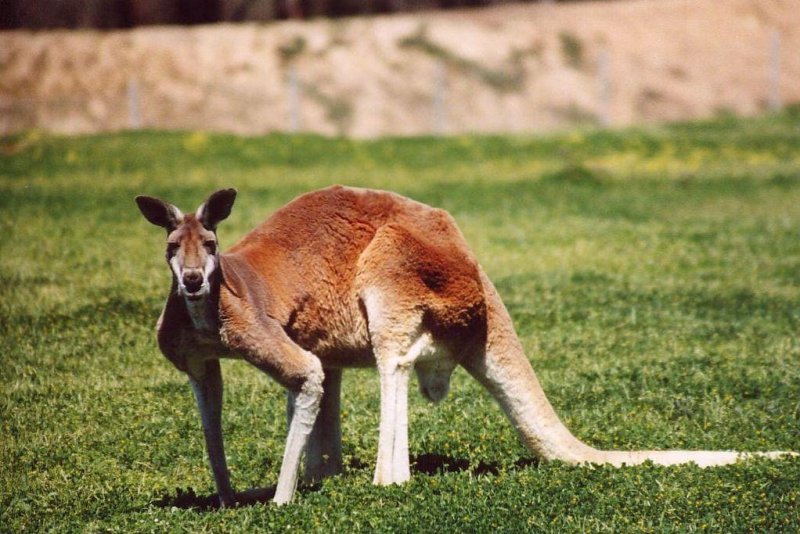A red kangaroo at the Western Plains Zoo in Dubbo, Australia. (CC/Keith Edkins)
SYDNEY, July 2 (UPI) -- They help monkeys hang in trees and cats balance -- tails, that is. And for kangaroos, they're like a fifth leg, researchers say.
Previous studies have shown that a kangaroo's tail serves as a counterbalance and springboard when hopping, storing up energy and helping the marsupial transition from bounce to bounce.
Now, researchers at the University of New South Wales have uncovered the vital role that a kangaroo's tail plays when the Australian mammal walks. The tail essentially becomes a fifth leg -- more important than the kangaroo's smaller forelegs and just as strong and hard-working as the leg of a comparably sized human on a stroll.
Researchers studied the mechanics of a kangaroo's stride by training several specimens, male and female, to saunter across a platform that measures pressure. They found the tail to be just a propulsive as the two hind legs.
"We expected this is because the muscles in the tail and hind legs are highly aerobic, with a lot of mitochondria in them doing a lot of work," explained lead researcher Terry Dawson.
Mitochondria is a part of the cell that provides energy -- like a battery.
"The muscle structure of the front legs have little mitochondria and they're not organized for propulsion, so instead of the tail being the strut, the front legs were filling that role," added Dawson. "I can now understand where that energy goes and why if they're going to walk more than five meters they get up and hop instead."
Surprisingly, kangaroos spend more time slowly walking along than they do hopping. So their strong tail is essential.
Though the study is the first to show -- conclusively and with hard evidence -- how important a kangaroo's tail is to its movement, Harvard University's Andrew Biewener said the findings aren't all that surprising. After all, a kangeroo's tail can support its body weight when the animal attempts to kick a rival with its hind legs.
The study "confirms what I would've expected," Biewener said. "They are five-legged animals when they're using their tail."
The study was published this week in the journal Royal Society Biology Letters.















